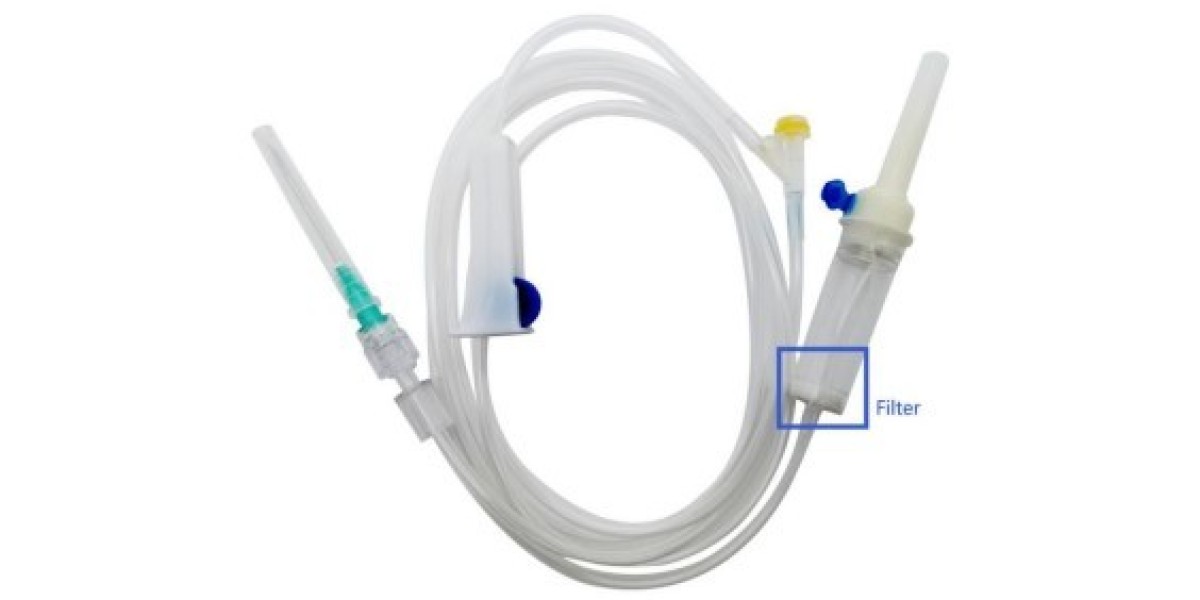Among these innovations is the butterfly cannula, a tool designed to enhance patient experience during injections and venipuncture. While syringes and needles are commonly used, the butterfly cannula offers several key advantages, especially for those who require repeated injections or for individuals who are particularly sensitive to needles. This article will delve into what butterfly cannulas are, how they work, their benefits, and why they are a critical tool in achieving pain-free injections.
What is a Butterfly Cannula?
A butterfly cannula, also known as a butterfly needle or winged infusion set, is a medical device used to access a vein for intravenous (IV) injections or blood draws. The name "butterfly" comes from the shape of the device. The cannula consists of a hollow, sharp needle with two flexible "wings" on either side. These wings allow for better control and stability during insertion, much like the wings of a butterfly. Butterfly cannulas are often used for short-term venous access, such as in pediatric care, geriatric care, or for patients requiring frequent blood draws or injections.
The butterfly cannula is made of medical-grade stainless steel and is connected to flexible tubing, which can be attached to syringes, IV bags, or other medical devices. The needle is usually smaller and more delicate than standard hypodermic needles, making it an excellent option for minimizing pain and discomfort during procedures.
How Does a Butterfly Cannula Work?
The mechanism behind the butterfly cannula is similar to traditional needles in that it is used to puncture the skin and access blood vessels for the administration of medication or the collection of blood. However, what sets the butterfly apart is its ergonomic design and precision.
When a healthcare professional uses a butterfly cannula, they first select the appropriate size of the needle based on the patient's vein size, the procedure, and their comfort. The "wings" of the butterfly are gently held between the fingers, allowing for a more stable and controlled insertion. The wings also ensure that the needle is positioned properly in the vein, which reduces the likelihood of misplacement or unnecessary pain. Once the needle is inserted, the wings can be taped to the skin to further stabilize the cannula and allow for easy, hands-free management of the procedure.
The thin and short design of the butterfly needle makes it ideal for small veins or areas of the body where more significant needles might cause irritation or discomfort. Butterfly needles are also typically used for procedures that require precise placement, such as when administering medication for pain relief, chemotherapy, or vaccines.
Benefits of Butterfly Cannulas
Reduced Pain and Discomfort
The primary advantage of butterfly cannulas is the reduced pain during insertion and removal. The short, fine needle design, coupled with the wings' stability, allows for gentler and more accurate punctures. Unlike traditional needles that might cause more tissue damage or irritation, butterfly needles are less traumatic to the skin and vein. This makes them a preferred choice for patients who may have sensitive skin or veins, such as children, the elderly, or those with chronic health conditions.
Precision and Control
The winged design provides excellent control over needle placement. The wings help the healthcare provider steady the needle, making it easier to target veins with greater accuracy. This is particularly beneficial when working with smaller veins, which are more prone to rolling or moving. By maintaining the needle's position, the butterfly cannula reduces the likelihood of missed or multiple punctures, which could cause additional pain and bruising.
Better Stability During Procedures
Because of the wings, the butterfly cannula remains stable once inserted, requiring less direct handling by the medical professional. This hands-free stability reduces the risk of damaging the vein, minimizes the chances of the needle shifting position, and provides the patient with a more comfortable experience. It also allows for more consistent delivery of medications or blood collection, which is important for achieving accurate results in procedures like blood tests or intravenous medication administration.
Ideal for Difficult-to-Reach Areas
Butterfly needles are especially useful for veins that are difficult to locate or access, such as those on the hands, feet, or in pediatric and geriatric patients. The compact size of the butterfly cannula allows healthcare providers to work in tight or challenging areas without causing unnecessary pain or damage to surrounding tissue.
Reduced Risk of Complications
With traditional IV lines, there is a higher risk of dislodging the needle or catheter, leading to leakage, swelling, or extravasation of fluids. The stability of the butterfly cannula mitigates this risk, helping to prevent complications during treatments such as chemotherapy or pain management. This ensures a safer and more comfortable experience for the patient.
Cost-Effective and Convenient
While butterfly cannulas are often used in more specialized settings, they are relatively affordable and easy to use. This makes them a cost-effective option for healthcare facilities that want to ensure a higher level of comfort for patients undergoing regular injections or blood draws.
When Are Butterfly Cannulas Used?
Butterfly cannulas are most commonly used for short-term procedures or in situations where more precision is needed. Some of the most frequent uses of butterfly needles include:
Blood draws and lab tests: Due to their precision, butterfly needles are often preferred for drawing blood, especially from patients with small or fragile veins.
Intravenous (IV) medications: For patients receiving IV medications on a temporary basis, such as in outpatient settings, butterfly cannulas are an excellent option.
Pediatric care: Children often have smaller veins, and they are particularly sensitive to discomfort during injections. Butterfly cannulas offer a more comfortable experience in these cases.
Elderly care: As veins age, they can become more fragile, making it harder to insert traditional needles. Butterfly cannulas provide a gentler, more accurate solution.
Conclusion
In medical practice, minimizing pain and discomfort during procedures is essential for patient satisfaction and overall well-being. Butterfly cannulas provide a critical advantage in this regard, offering a pain-free, precise, and stable method for administering injections and drawing blood. Their ergonomic design and ability to provide control during insertion make them a vital tool in healthcare settings, particularly for those requiring repeated injections or blood draws. For patients, especially those with small or fragile veins, butterfly cannulas offer an excellent solution that reduces trauma and improves the overall healthcare experience.









